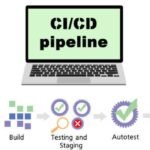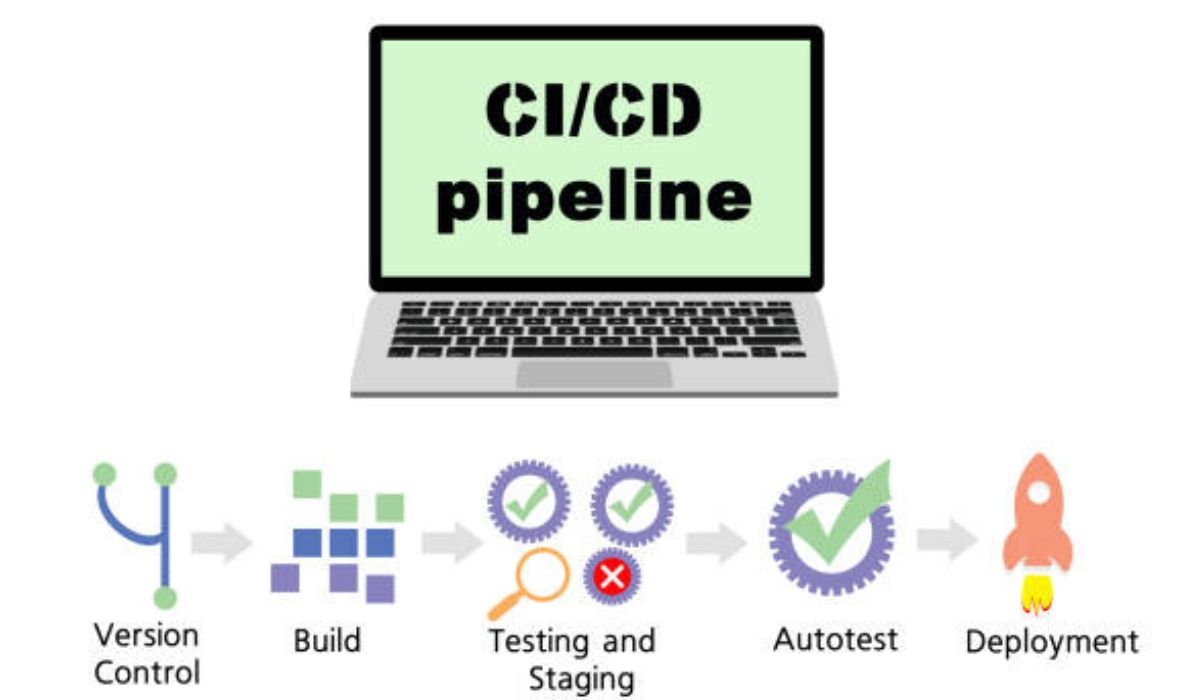Given today’s rapidly evolving digital world, organizations can no longer afford to deploy applications using a completely manual process or semi-reliable tools. Software as a whole has become more intricate and distributed, and speed and reliability have become increasingly necessary to succeed. AI test automation is the disruptive approach that is redefining how organizations think when designing, managing, and optimizing their Continuous Integration and Continuous Deployment (CI/CD) software pipelines.
In this blog, we explore how Intelligent Process Automation (IPA) creates Smarter CI/CD Pipelines and facilitates development teams to maximize speed, quality, and creativity.
The Traditional CI/CD Landscape: What’s Missing?
To appreciate how Intelligent Process Automation reshapes the landscape, it is necessary to recognize the traditional CI/CD framework first. At its most basic, CI/CD is about continuous integration of code and eventual automated testing before deploying into a production setting with minimal friction. Tools such as Jenkins, GitLab, CircleCI, and others have moved the world towards automating these workflows.
However, as this CI/CD becomes more mature and complex, challenges begin to occur:
- The Volume of Changes: If multiple developers are making changes often, maintaining pipeline stability and functionality becomes difficult.
- Testing Bottlenecks: Traditional automation cannot always predict or determine which tests should be run based on the severity or relevance of the changes.
- Manual Decision Points: Approval workflows, rollback decisions, and anomaly detection often still depend upon human interactions.
- Inefficient Resource Use: The pipeline runs every test, regardless of context and importance, wasting resources and valuable time.
In the end, all of these inefficiencies impact the velocity of software release and quality of the software, two things that organizations cannot afford in a competitive marketplace.
What is Intelligent Process Automation (IPA)?
IPA is the combination of standard automation technology with AI. IPA is not just about automating tasks; it is about making automation intelligent. IPA brings the following technologies together:
- AI and Machine Learning: For anomaly detection, predictive analytics, and decision-making.
- Robotic Process Automation (RPA): Manage routine, rule-based tasks without the need for human intervention.
- Natural Language Processing (NLP): To analyze logs, user stories, and documentation.
- Cognitive Agents: Digital assistants or bots that can incorporate suggestions, detect problems, or suggest guidance on behalf of developers.
When used in CI/CD, IPA transforms a rigorous and rule-based pipeline into an adaptable and self-healing pipeline.
AI testing tools such as LambdaTest augment this strategy by offering smart, AI-based test orchestration across thousands of browsers and devices in the cloud. LambdaTest has built-in flaky test detection, parallel execution, and intelligent test selection based on previous patterns, which ensures that only the most relevant tests will execute, less time spent executing tests while still achieving good coverage and reliability.
How IPA Improves CI/CD Pipelines
More Intelligent Code Integration
AI automation can analyze code commits to see the likely impact on your system. Instead of handling every commit as equal, IPA systems categorize and trigger workflows. For example:
- Changes to the UI might only trigger tests for the frontend.
- API and integration tests may be triggered by modifications to the backend logic.
- Critical security-related code might trigger required reviews and scans.
By selectively triggering workflows like this, it can improve speed and efficiency.
Predictive Test Deployment
One of the most useful characteristics of IPA is the ability to predict test execution. Instead of deploying all the tests for every commit, AI algorithms will analyze a code commit and get the best test cases suited for this code change by using past behavior and dependency maps.
This is useful, as it can drastically improve test run time while maintaining strong confidence in results.
This is where AI test automation really makes a difference: by using the historical data of a given application, your AI models can continually assign better levels of relevancy, whilst hopefully reducing false positives and catching regressions accurately.
Self-healing Pipelines
Unfortunately, pipelines can break because of flaky tests, configuration errors to environment specifications, or intermittent infrastructure issues. IPA systems with cognitive capabilities can:
- Identify test flakiness patterns.
- Rerun or quarantine inconsistent tests.
- Suggest or make corrections based on prior failures.
- Dynamically configure environments based on historical success rates.
This results in fewer red builds and a more stable delivery pipeline.
Smart Deployment Decisions
AI Automation doesn’t stop at integration and testing but moves to deployment. Smart deployment strategies can:
- Review development data to determine the best time to deploy.
- Monitor the behavior of users and roll back when anomalies or risks are detected.
- Apply Machine Learning to review the last few deployments to determine how successful they were and how to improve.
Intelligent process automation creates feedback cycles. This makes your CI/CD pipeline evolve into a continuous learning system.
Improved Security and Compliance
With regulatory compliance and cybersecurity liability becoming a top priority, intelligent process automation can:
- Scan commits made to code for security vulnerabilities.
- Monitor infrastructure configurations for compliance violations.
- Read any commit messaging or documentation for signals of risk using Natural Language Processing (NLP).
- Automatically tag or flag a commit, and that requires an extra layer of review.
The focus on security leads to fewer vulnerabilities and avoids risks to compliance.
READ ALSO: Web Innovation Severedbytes: Building Unbreakable Digital Futures
The Data in AI Automation
Any AI automation system is built on data. To make intelligent decisions, the pipeline must be fed a constant stream of:
- Code changes and commit histories.
- Test results and failure logs.
- Deployment results and logs.
- Monitoring and observability data.
- Feedback and notes from developers.
With a bigger and more complete dataset, the AI can better identify patterns, prevent problems and suggest optimizations.
As with any AI data systems, however, even benefiting from vast improvements, teams will still need to establish good practice around data privacy, data retention and data governance when using any type of sensitive data.
How to Implement IPA into your CI/CD Pipeline
Using an IPA-enabled pipeline is not an overnight enactment; it requires a series of steps to gradually introduce automation capabilities over time. Below is a pathway that you can follow to see how you may progress through each phase.
Assessment
The first thing to do is to assess the current state of your pipeline:
- What are the bottlenecks of the pipeline?
- What processes are still mostly manual or rules-based?
- What historical data do you have?
Automation foundation
Your pipeline needs to have sufficient automation throughout every step of the pipeline process, to include version control, testing, deploying, and monitoring.
AI-friendly best practices
You will also need to implement AI-friendly best practices:
- Tag and annotate test failures.
- Track the root cause of errors.
- Develop standard file naming and conventions for test cases and logs.
This work will help AI systems learn and improve.
Start Small
Implement AI in a single area—like test case selection or deployment ability monitoring. Measure impact, refine it, and expand.
Feedback Loops
Establish practices for ongoing human feedback to iterate on the models. Development team, testing team, and ops team should contribute data about false positives, out-of-the-norm experiences, or common automation gaps.
Benefits of IPA in CI/CD
In CI/CD pipelines, intelligent process automation is very advantageous:
- Rapid Time to Market: Making wise decisions results in quicker deployments, testing, and builds.
- Better Quality: AI detects bugs more quickly and recommends a better approach to testing.
- Cost Efficiency: Reduced compute and developer resources wastage.
- Increased Productivity of Developers: IPA enables developers to work on code quality instead of repeatedly performing a routine or analytical task.
- Enhanced Resilience and adaptability: Self-healing systems will eliminate downtime and make it easier to roll out new versions without the discomfort associated with traditional system releases.
Challenges and Considerations
Adopting IPA, while promising, does come with difficulties:
- Model Accuracy: AI models take time and data to become smart. Not all initial model outputs will be valid.
- Integration Complexity: Integrating AI tools into current pipelines will require thoughtful consideration and testing.
- Cultural Acceptance: Developers or ops teams might not be willing to accept automation as absolute on the first run.
- Security and Privacy: Things to think about in the design of an AI system that will handle sensitive data.
Despite these challenges, the long-term benefits far outweigh those initial challenges.
Future Trends: What’s Next for AI in CI/CD?
The next chapter of CI/CD will be autonomous pipelines, which can manage the end-to-end lifecycle of development with minimal human involvement. Future possibilities include:
- Generative AI: Tools that take the step further than analyzing test results and also write new test cases or code based on detected gaps.
- AI Pair Programming: Continuous integration tools that both author changes and suggest refactors in real-time.
- Autonomous Rollouts: Systems that can manage canary deployments based solely on user behavior data.
- Cross-team Knowledge Graphs: AI systems that comprehend interdependencies across the entire organization as they relate to deployment strategy.
These improvements will not simply accelerate software delivery; they will transform the way teams deliver and innovate.
Final thoughts
Intelligent Process Automation (IPA) is not just an improvement of the CI/CD pipeline; it’s a whole new experience. From coding to delivery, cognitive capabilities can be used in every delivery phase, so teams can stop reacting to problems and can instead optimize proactively. With AI automation leading the way, developers have smarter tools to work with, testers will have more accuracy, and companies will embrace faster and safer releases.
As AI mobile app testing continues to advance, integrating it into the CI/CD pipeline has become essential. Early adopters gain a competitive advantage by maintaining the speed, quality, and intelligence required for modern software delivery. By embedding AI-driven testing into every stage of development, teams can detect issues faster, optimize workflows, and ensure that mobile applications perform reliably across devices and platforms.
YOU MAY ALSO LIKE: How to Upgrade Your Roller Blinds with Smart Home Automation Features











